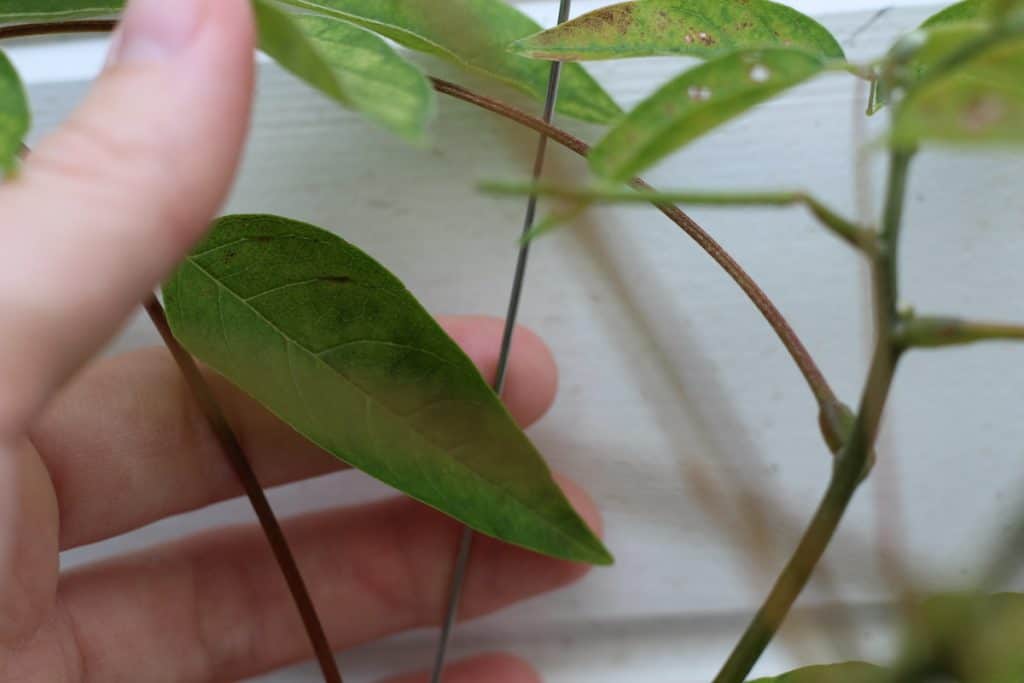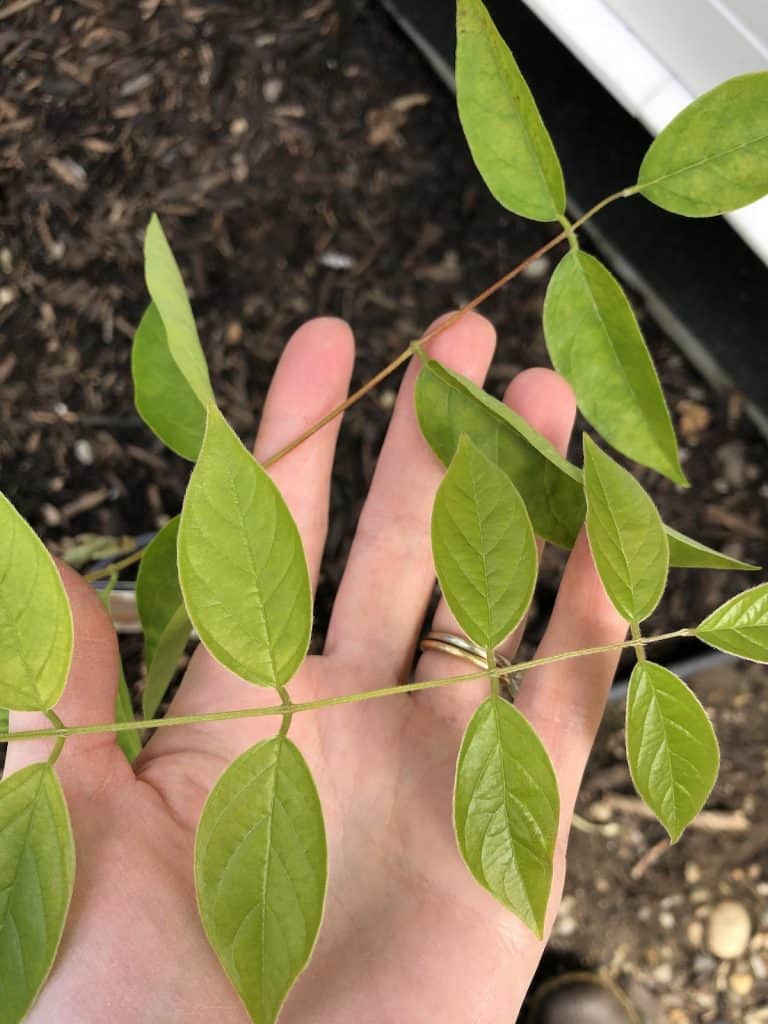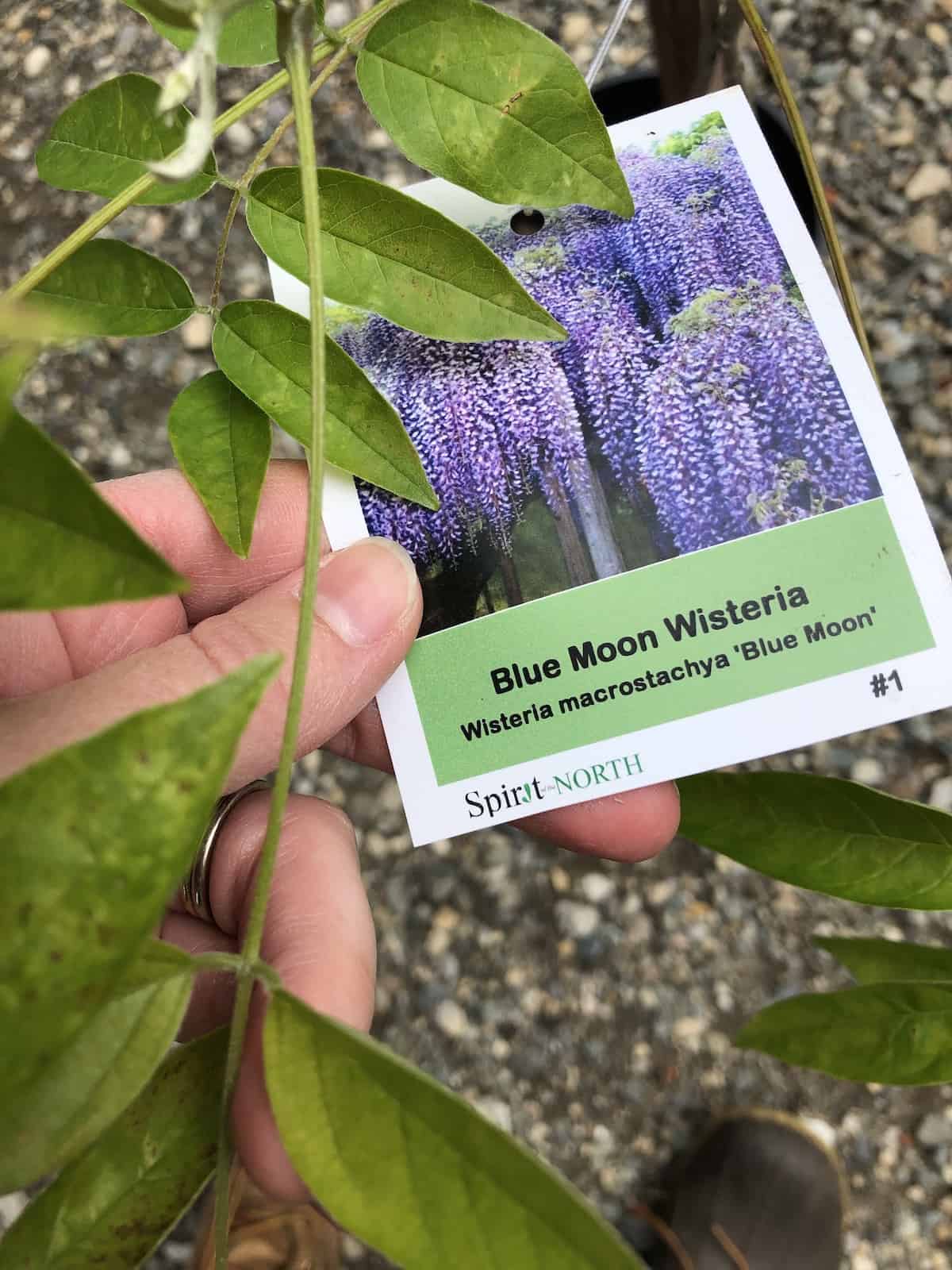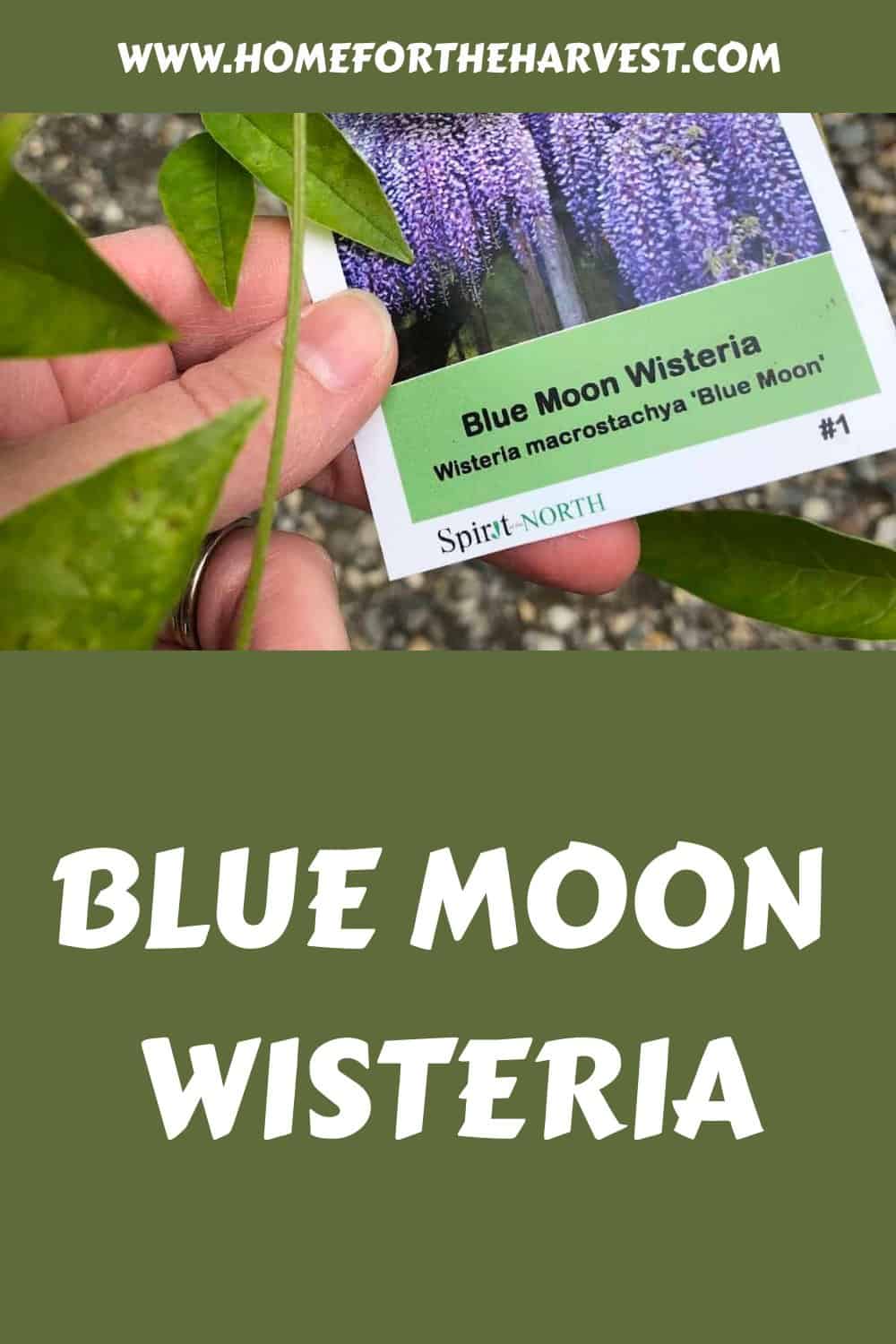Blue Moon wisteria is a cultivar of Kentucky wisteria, native to the USA. This long-lived flowering vine loves the sunshine and can bloom several times during the spring and summer. Blue Moon wisteria can survive winters as cold as -40°F (-40°C), attracts pollinators to the garden, and is easy to grow in the home landscape.
Blue Moon wisteria basics
Blue Moon Wisteria (Wisteria macrostachya ‘Blue Moon’) is a selected cultivar of Kentucky wisteria known for its cold-hardiness and stunning lavender-blue trailing flowers. This deciduous vine is native to the swampy lowlands of the southern USA and can be grown in hardiness zones 3-9 (most wisteria is only hardy down to zone 5).
Part of the legume plant family (Fabaceae), the Blue Moon climbing wisteria vine is considered less vigorous than some other types of wisteria, but it can still reach 25 feet or more in length. Blue Moon wisteria flowers have a similar appearance and floral fragrance to American Wisteria (Wisteria frutescens), but they can be grown in areas with colder winters.
Wisteria ‘Blue Moon’ was developed by Harvey and Brigitte Buchite of Hidden Springs Flower Farm in Spring Grove, Minnesota. More information about this native wisteria selection is available on the Hidden Springs Flower Farm website:
“Blue Moon Wisteria was developed by Harvey and Brigitte Buchite. Noted as one of the hardiest and free blooming of all native wisterias. It has been blooming faithfully for over 29 years now, three times a summer in our garden and many of our customers gardens too!”
Hidden Springs Flower Farm, Spring Grove, Minnesota
“‘Blue Moon’ (W. macrostachya) is a Zone (3)4-9 selection of Kentucky Wisteria, bred to withstand Minnesota winters. This new cultivar is reportedly fully hardy to -40. It has fragrant blue flowers that bloom in early summer and rebloom throughout the season.”
Got Sun?: 200 Best Native Plants for Your Garden, by Carolyn A. Harstad
Planting Blue Moon wisteria
Here are the basics for planting Blue Moon Wisteria in your garden:
- Choose an open site with full sun, good air circulation, and reasonable root distance from vulnerable structure foundations.
- Plan for a small temporary lattice/trellis for several years, followed by a more significant support structure capable of supporting a full-grown wisteria vine of over 25 feet in length.
- Plant the young vine in a hole no deeper than the soil in the plant pot. The hole should be about 2x wider than the nursery pot.
- Keep soil moist immediately after planting and in subsequent weeks, months, and years. Consider installing drip irrigation.
- Mulch soil with a quality organic mulch to retain soil moisture and stabilize moisture levels overall
- Following planting, prune out any dead, dying, damaged, or diseased stems. Leave one or two of the strongest shoots to begin training.
- Gently tie stems to the support trellis to begin training the vine. The stems of Blue Moon wisteria tend to twist counterclockwise around each other (as opposed to Japanese wisteria, which tends to twist clockwise).
“Stems twine counterclockwise and are clad with compound, odd-pinnate, deep green leaves (each leaf typically with 9 ovate leaflets). Over time, the stems of this vine become twisted and trunk-like.”
Wisteria macrostachya ‘Blue Moon’, Missouri Botanical Garden

Length of time for Blue Moon wisteria to bloom
It generally takes 3 years for Blue Moon wisteria to bloom. Well-supported plants grown in full sun may bloom as early as two years after planting, while vines with less-optimal conditions may take 4 or even 5 years after being planted in the landscape to begin blooming in earnest.
Here are some tips for encouraging Blue Moon wisteria to bloom:
- Plant in a full-sun location (a minimum of 6 hours of direct sunlight daily),
- Provide a support trellis for the young plant,
- Ensure good air circulation around the vine (give it space),
- Keep soil moist and well-watered,
- Top-dress soil with homemade organic compost each spring,
- Minimize pruning of young plants after initial planting,
- Try an application of phosphate-rich organic fertilizer in early spring,
- Dead-heading throughout the year, each year, can make bloom periods more consistent,
- An early-summer pruning may encourage the formation of late-summer flower buds.
“Hardy to -40 degrees F. it will bloom up to three times a year when planted in full sun.”
Hidden Springs Flower Farm, Spring Grove, Minnesota

Growing Blue Moon wisteria in the garden
Blue Moon wisteria is a wonderful choice for the northern ornamental garden. Considered the most cold-hardy wisteria, this plant can be somewhat of an attraction in northern climates that are unable to grow the more common American and Asian wisteria varieties.
Wisteria is generally grown in areas where its draping blooms can be fully appreciated. Here are some ways to use Blue Moon wisteria in your garden:
- Over an arch, arbor, gateway, or even a trellised tunnel,
- As a summertime privacy screen for a patio,
- Espaliered in a formal ornamental garden,
- Along the roof of a pergola or an outdoor ‘living’ room or sensory garden,
- Along the top of a not-so-important wall (wisterias are vigorous and are generally discouraged from being planted right next to houses, et cetera),
- Along the top of a sunny fence.
Blue Moon wisteria is sure to make a statement wherever this re-blooming, cold-hardy plant is located!
“Wisteria is a naturally twining vine that can take many forms – a two-dimensional covering against a wall, a three-dimensional blanket over an arbor, or a freestanding (with the initial help of a stake) tree or shrub. Whatever the form, in new plants encourage the strong growth of shoots that will comprise the main framework of the “finished plant”. This framework consists of a trunk and one or more main arms.”
The Pruning Book, by Lee Reich
Pruning Blue Moon wisteria
Pruning of wisteria “Blue Moon” should be carefully considered when the plant is young and becoming established. Any vines that are dead, dying, diseased, or damaged should be removed at planting. Remove any weak shoots and leave only one or two strong stems to begin training up the support trellis.
Strong, established Blue Moon wisteria vines are generally pruned as soon as the flowers fade in spring. Pruning in early summer can sometimes prompt improved re-blooming by encouraging the vine to grow more flower buds. Pruning in winter is certainly possible but may reduce early spring flowering. That said, these wisterias are known for their ability to rebloom throughout the summer.
Pruning a Blue Moon wisteria should start with removing any stems and foliage that are dead, dying, diseased, or damaged. Next, remove any tangled stems that are going off in the wrong direction. Thin out stems in crowded areas to increase sunlight accessibility and air circulation. It’s even possible to cut a stem back to the ground to let a fresh new shoot grow up in its place.
“There are other variations on pruning wisteria: pinching out the tips of all side shoots a few times during the growing season; cutting side shoots monthly to two or three buds; or shortening side shoots to 6 inches every two weeks throughout the summer. Any of these methods is especially useful when you want the tighter and more florific habit needed for a tree wisteria or a more formal espaliered wisteria.”
The Pruning Book, by Lee Reich
Wisteria and garden wildlife
Wisteria’s flowers attract lovely garden wildlife like butterflies and hummingbirds. I planted mine in the same vicinity as one of our hummingbird feeders in hopes that it will one day add to their nectar sources, as it is a native plant.







